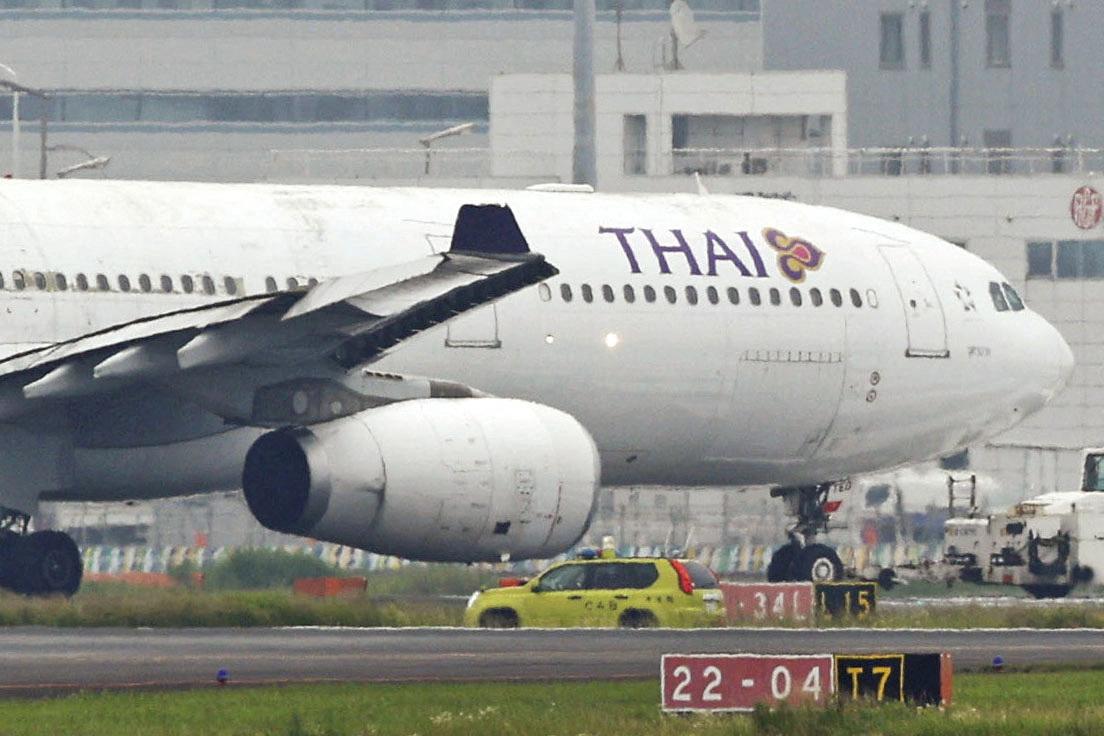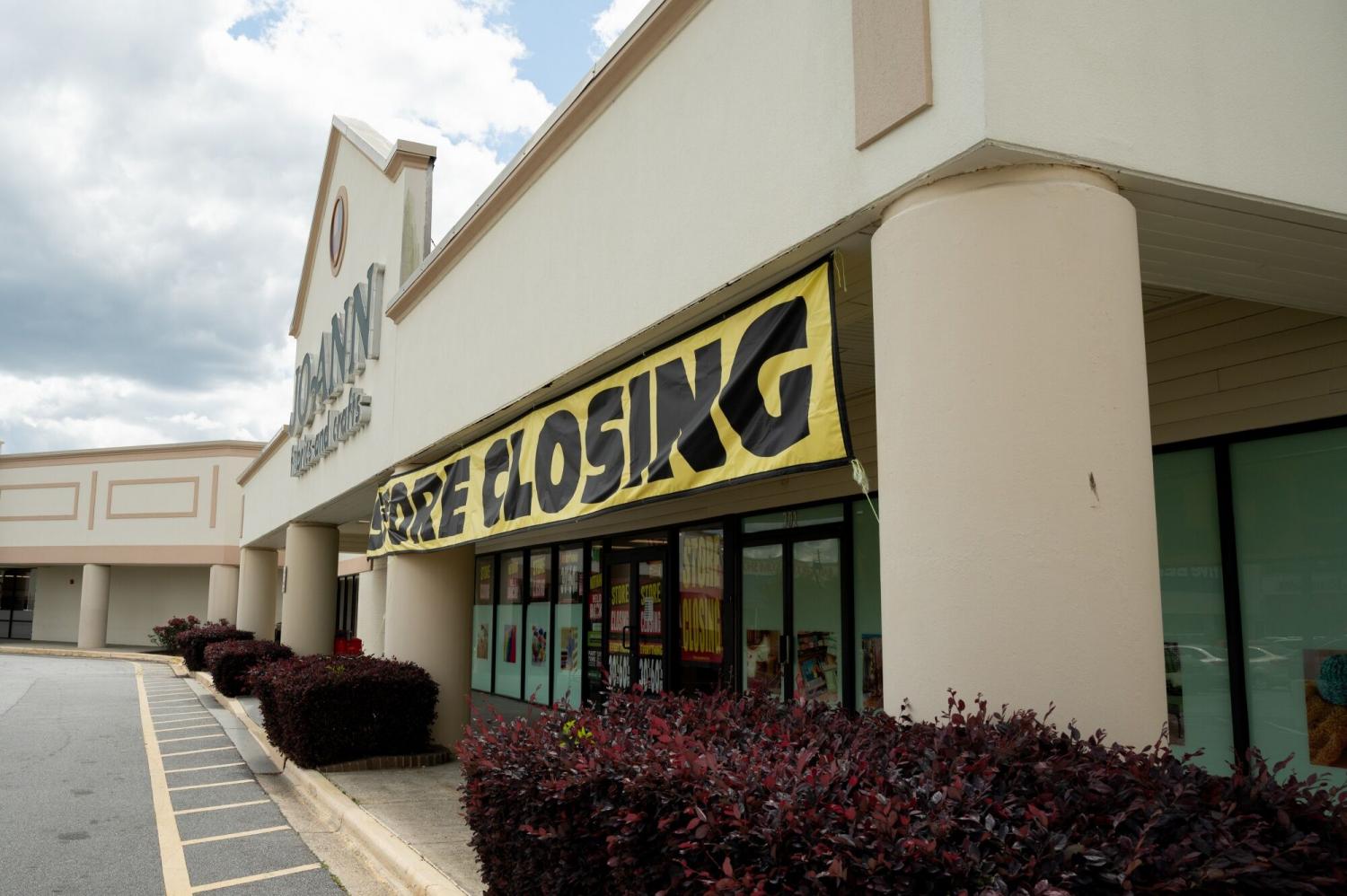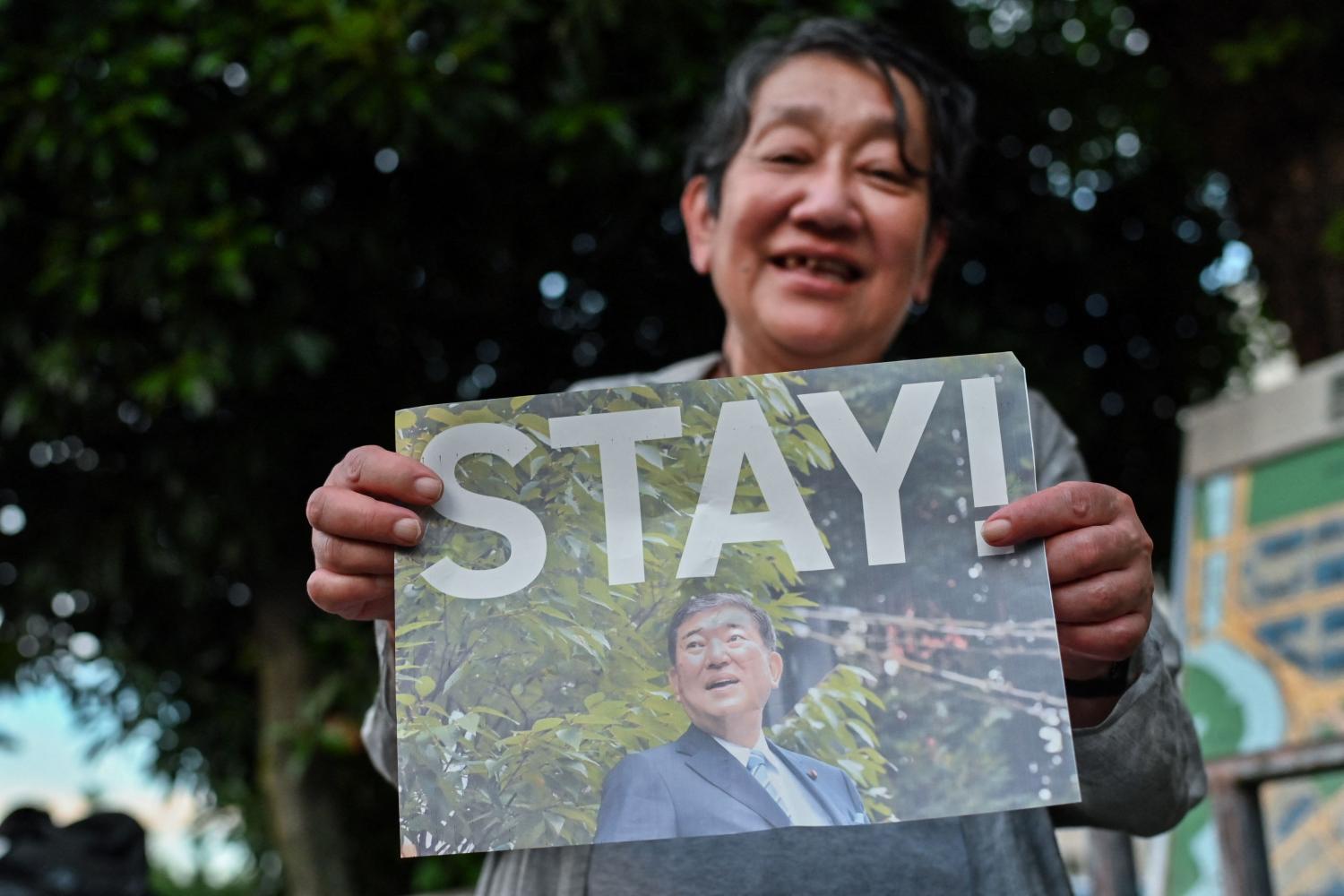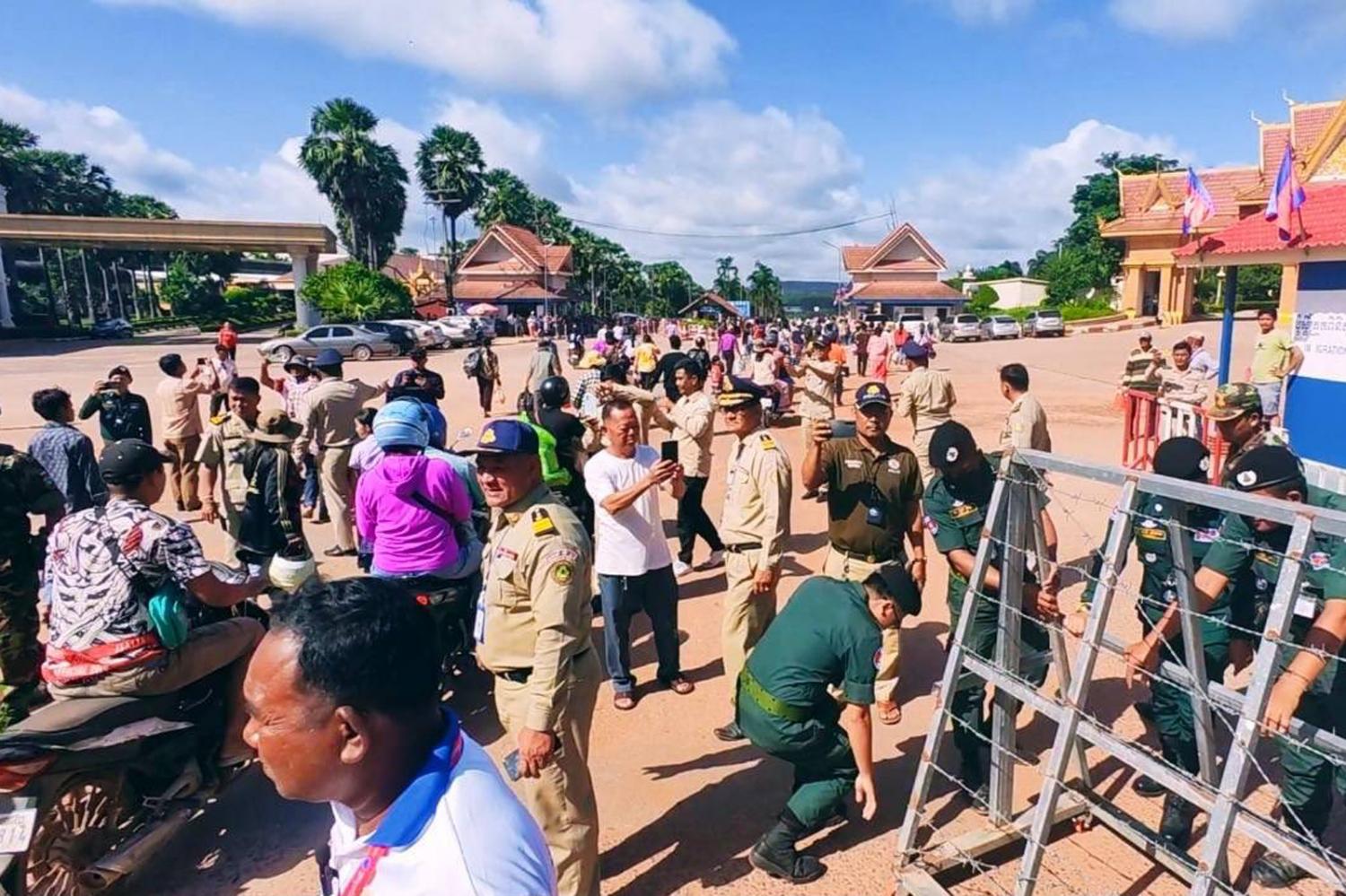A warning from a Seattle-based environmental watchdog about more than 200 hazardous waste containers heading to Thailand this month underscores an urgent demand for decisive government action. The development rekindles questions about how the country manages imported waste and whether it is becoming a safe harbor for toxic materials. Past alerts from the Basel Action Network have proved timely, helping authorities intercept harmful shipments and return them to their ports of origin. The latest advisory notes that the 222 containers in question include 219 shipments of electronic waste and a smaller portion of plastic waste, with origins traced to New York and a scheduled arrival window spanning late May to late June. This situation amplifies concerns about illegal waste movements, local community health, and the integrity of environmental governance in Thailand, as officials contemplate interception, enforcement, and accountability for those who facilitate such transboundary exchanges.
Background and Context
Over the past decade, Thailand has found itself at the nexus of a broader regional shift in the global electronic and toxic waste trade. China, once the epicenter of much of the world’s electronic waste, intensified regulatory crackdowns in 2018 that redirected waste flows toward Southeast Asia, including Thailand. This realignment has brought heightened attention to the country’s capabilities and limits in screening and processing hazardous materials. In this broader backdrop, the current tip-off from BAN reiterates a persistent vulnerability: multiple shipments of waste passing through or bound for Thai facilities, sometimes slipping past initial scrutiny and prompting urgent responses from law enforcement and regulatory agencies.
Historical incidents have shown that Thailand is not immune to these pressures. For example, in August of the previous year, BAN alerted authorities to two cargo vessels carrying about 100 containers of toxic waste—originating from two European countries and destined for Laem Chabang Port in Chon Buri. The alert proved actionable, as Thai authorities were able to halt the containers, which contained toxic furnace dust, in Singapore’s deep-water port and coordinate their return to their ports of origin. Such episodes highlight both the ongoing threat of improper waste shipments and the capacity of international cooperation to resolve specific cases when timely information is available. In another prior instance, officials located six containers carrying printed circuit board scrap in the Special Economic Zone (SEZ) in Chon Buri; those containers were shipped from the United States to a recycling facility within the SEZ. Taken together, these past events establish a troubling pattern of hazardous waste movements touching Thai soil and raising questions about who benefits from these shipments, how they are monitored, and what safeguards are in place to prevent harm to residents and ecosystems.
In the current case, BAN has indicated that the shipment consists of 222 containers, with 219 containers filled with electronic waste and the remaining containers containing plastic waste. The containers reportedly departed from New York and are slated to arrive in Thailand between late May and late June. The scale and composition of this shipment intensify concerns about potential health risks to nearby communities, the adequacy of waste treatment infrastructure, and whether Thai authorities possess the necessary tools to track and regulate such flows effectively. The mixed nature of the cargo—predominantly electronic waste with a subset of plastics—also raises questions about how Thailand classifies and handles different types of hazardous waste, what permits and licenses are required for import, and how recycling facilities are vetted for compliance with environmental and labor standards.
This context is further complicated by a broader administrative and regulatory landscape in Thailand. Historical policy developments, including the National Council for Peace and Order (NCPO) framework established in 2014 and its 2016 guidelines—such as the 4/2559 order that facilitated biomass power plants and waste-management facilities in proximity to communities—have fed concerns about a permissive environment for waste-related siting and activity. Critics argue that such policies create incentives for establishing facilities near populations, potentially heightening exposure risks to air, soil, and water in surrounding areas. The cynosure of these debates centers on whether regulatory mechanisms are sufficiently robust to prevent the establishment of inappropriate operations or to constrain problematic waste movements before they inflict harm on communities, farms, tourism, and the broader environment.
Amid these tensions, local voices and civil society organizations have repeatedly pointed to ongoing patterns of waste-related troubles—ranging from illegal shipments to environmental pollution and incidents at recycling facilities. Notably, concerns have grown about the proliferation of recycling plants owned by foreign investors, with particular emphasis on Chinese interests in some projects. The cumulative impression is that the country is grappling with a long arc of policy and enforcement challenges, where the line between legitimate waste management and illicit importation is frequently tested by evolving economic incentives, international waste markets, and gaps in regulatory oversight.
Within this framework, observers have highlighted the pivotal role of independent watchdogs, journalists, and community advocates in surfacing questionable activities and pressuring authorities to act. The BAN alerts, along with local reporting on pollution events, have functioned as critical catalysts for heightened scrutiny, prompting calls for systematic strengthening of border controls, port surveillance, and traceability of waste streams. The historical and contemporary threads collectively suggest that while Thailand has taken steps to address waste movements, the risk of becoming a regional dumping ground remains real unless governance mechanisms are tightened, enforcement is intensified, and accountability is expanded to cover all parties involved in the chain of custody for hazardous waste.
The Latest Shipment: Details, Channels, and Official Response
The present notice about 222 containers arriving in Thailand—of which 219 consignments are electronic waste and the remainder plastics—occupies a central place in discourse over waste governance. The containers are reported to have left from a port in New York, with transit routes likely passing through hubs in Asia or the Middle East before final destination in Thailand. The temporal window for their arrival is defined as spanning from May 30 to June 21, creating a tightly bounded period in which authorities will monitor, intercept if necessary, and assess compliance with import regulations. The scale of this shipment is significant: electronic waste, which encompasses a spectrum of components including circuit boards, connectors, metals, and other materials, presents particular challenges in terms of hazardous exposure risk, environmental contamination, and potential for improper processing in facilities lacking adequate safeguards. The plastic waste component, while sometimes perceived as less immediately perilous, also carries hazardous implications depending on the type of plastics and whether they contain additives, contaminants, or residues.
Thai authorities—in particular the Customs Department and the Factory Department—have acknowledged the matter and indicated they are actively assessing the shipment while preparing to intercept if necessary. The objective is twofold: to prevent potentially hazardous materials from entering channels that could lead to improper handling, recycling, or disposal, and to clarify the relationship between the shipment and the Thai market for recycled materials. A central element of the response plan is to identify the local companies and recycling factories that are connected with these consignments. Without a clearly defined recipient or chain of custody, shipments could not proceed to their intended destinations; thus, establishing the identity of importers, brokers, and facility operators becomes a critical mechanism for accountability. The authorities’ stated intent to pursue an interception if warranted reflects an approach that emphasizes proactive risk management, public safety, and adherence to environmental standards.
The official stance also underscores a broader principle: importers must demonstrate that their waste streams meet domestic regulatory criteria, including proper documentation, compliance with labeling and handling requirements, and assurance of end-use destinations that align with environmental safeguards. The process of intercepting or returning waste consignments hinges on a transparent and traceable supply chain, including verifiable permits, appropriate shipping declarations, and evidence of lawful disposal or recycling pathways. In practice, this means that regulators would need to verify the legitimacy of the recipient facilities, confirm the capacity of those facilities to process the waste in a manner consistent with environmental protection standards, and ascertain that the waste will not be disposed of in ways that could endanger adjacent communities or ecosystems.
The interplay between public authorities and international partners is also a salient feature of the current case. Given the prior history of shipments that have been redirected or blocked at other ports, Thailand’s stakeholders may seek to coordinate with counterpart agencies in destination and transit countries to ensure that waste returns to its port of origin when legitimate grounds exist to do so. This collaborative operational dynamic requires robust information-sharing, clear regulatory authority, and rapid decision-making processes within the Thai government. It further implicates the need for robust domestic infrastructure—both in terms of inspection capabilities at entry points and the capacity to track and verify the origin and destination of waste shipments over time.
In the meantime, observers anticipate a possible convergence of actions: authorities will continue to monitor the movement of the containers, escalate inspections for shipments destined for factories and recycling plants, and pursue a comprehensive audit of potential recipients within the country. The broader objective is to build a more defensible system that can deter illicit waste movements while ensuring that legitimate recycling activities can proceed with strong environmental and labor protections. The balance between safeguarding public health and supporting legitimate recycling initiatives will likely shape the contours of policy refinements and enforcement strategies in the weeks ahead.
Local Communities, Health, and Environmental Impacts
The footprint of hazardous waste movements extends beyond regulatory compliance and market dynamics; it touches the daily lives of residents, farmers, and local economies. In communities near recycling facilities and waste handling sites, residents frequently report air and soil contamination, odor complications, and concerns about long-term health effects. In some cases, the presence of processing activities near settlements has coincided with incidents that raise alarms about safety protocols, emergency preparedness, and the integrity of environmental controls. The cumulative impact on agriculture, water resources, and tourism can be substantial, particularly when local ecosystems bear the brunt of pollution or when communities experience disruption from accidents, fires, or repeated odors and emissions.
A particularly instructive example is the Ban Soong Moo 3 village in the Phanom Sarakham district of Chachoengsao. Local residents raised concerns after soil donated by a recycling plant within the community was found to be contaminated with crushed electronic waste. Such incidents highlight several critical vulnerabilities: the potential for cross-contamination, the complexity of tracing pollution sources, and the difficulty of ensuring accountability when operations involve both local stakeholders and foreign investors. The case underscores the need for rigorous soil testing, transparent reporting of contamination events, and swift remediation measures to protect crops, livestock, and human health. It also emphasizes the importance of independent oversight to verify that waste handling facilities adhere to environmental standards, and that communities receive timely information and redress when violations occur.
Beyond specific contamination events, there is a broader concern about air quality and environmental integrity in areas hosting waste-handling facilities. Recurrent complaints about pollution, traffic, and nuisance associated with waste management operations reflect ongoing tensions between industrial activity and community welfare. Local governments and environmental agencies are tasked with enforcing noise ordinances, air and water quality standards, and safe storage practices for hazardous materials. In many cases, the effective resolution of complaints depends on the speed and rigor with which authorities respond to alleged violations, the quality of environmental monitoring data, and the level of community engagement in oversight processes. Communities are increasingly seeking proactive measures, including independent monitoring, clear public reporting, and accessible channels for reporting concerns without fear of retaliation.
The potential for fires and other accidents at recycling facilities remains a salient risk. Fire incidents can release toxic fumes and particulates into surrounding neighborhoods, placing vulnerable populations at heightened risk. In addition to the immediate danger of fires, accidents can also lead to longer-term environmental damage, including soil and groundwater contamination. This reality reinforces the need for robust safety protocols, emergency response planning, and regular drills with local fire departments and health authorities. It also raises questions about the adequacy of licensing, facility siting decisions, and ongoing compliance inspections that govern where and how hazardous waste is processed.
From an economic standpoint, the presence of hazardous waste handling facilities can influence local development trajectories. Communities must weigh potential job creation and investment against potential health risks and environmental liabilities. Transparent community engagement processes, independent risk assessments, and clear disclosure of potential impacts are essential to maintaining public trust and ensuring that development benefits do not come at the expense of residents’ well-being. Proactive measures, including environmental remediation plans, soil and water testing programs, and compensation mechanisms for affected households, can help mitigate adverse outcomes and foster a more resilient local economy.
Governance, Enforcement Gaps, and Policy Recommendations
A central driver of Thailand’s waste management challenges lies in the governance and enforcement architecture surrounding hazardous materials imports and facility operations. The current situation suggests gaps in monitoring, risk-based inspections, and the ability to trace waste streams from origin to end use. Strengthening the Customs Department’s monitoring systems is critical, with a focus on enhancing risk assessment capabilities, improving data integration across agencies, and accelerating the processing of import permits and declarations for materials classified as hazardous or potentially contaminated. A comprehensive upgrade to border inspection protocols—emphasizing the identification of suspect shipments destined for factories and recycling plants—could significantly reduce the likelihood of illicit consignments slipping through.
Key steps for strengthening enforcement and governance could include:
- Establishing a standardized, auditable chain-of-custody for all waste shipments, including clear documentation of origin, transfer intermediaries, and end-use destinations.
- Requiring importers to demonstrate compliance with domestic environmental standards and to provide verifiable end-use plans for recycled materials, including remediation and safe disposal strategies where needed.
- Expanding investigative authority to enable rapid interception and, when warranted, temporary hold or return of shipments to their port of origin, pending confirmatory testing and regulatory clearance.
- Implementing systematic, risk-based inspections at major entry points and at facilities handling imported waste, with the capacity to perform on-site testing and independent verification.
- Fostering interagency cooperation among Customs, the Factory Department, environmental agencies, health authorities, and local governments to ensure coherent policy execution and swift information sharing.
- Enhancing transparency by publicizing aggregate data on imported waste, inspection outcomes, and enforcement actions in a manner accessible to affected communities and civil society organizations, while respecting privacy and security constraints.
Additionally, clarifying the regulatory framework for siting waste-handling and biomass facilities is essential. Policies introduced or amended since 2016—such as those that make certain kinds of biomass plants and waste-management facilities permissible near communities—should be revisited to align with contemporary environmental and public health standards. A careful balance is required to support legitimate waste processing and renewable energy initiatives while preventing the inadvertent creation of hotspots for pollution, health risks, or social disruption. There is a compelling argument for establishing stricter zoning, buffer zones, and robust environmental impact assessments for any facility dealing with hazardous materials, particularly where residential populations are in proximity.
From an enforcement perspective, the government should consider strengthening penalties for violations related to hazardous waste import, handling, and disposal. Harsher penalties—coupled with swift adjudication and transparent accountability mechanisms—would deter violations and reinforce the seriousness with which authorities treat such cases. Equally important is the need to bolster the capacity of local authorities to monitor and report environmental data, provide timely notifications to communities when contamination concerns arise, and coordinate remediation efforts when pollution is detected. Community-facing protections, including accessible complaint channels and guarantees of non-retaliation for whistleblowers, can further tighten the social contract between residents and authorities.
The role of the private sector—particularly foreign-invested recycling operations—requires careful governance to ensure that corporate interests do not override the public interest. Clear guidelines for corporate accountability, binding environmental performance standards, and independent third-party audits can help ensure that recycling facilities operate with high safety and environmental stewardship. In addition, incentives for sustainable, circular economy practices should accompany stricter enforcement. This could include tax incentives or subsidies for facilities that demonstrate best-practice environmental management, worker safety, and transparent reporting, coupled with penalties for non-compliance or for false or misleading disclosures.
A forward-looking policy framework would also contemplate regional cooperation to address cross-border waste challenges. As the Southeast Asian region contends with a shifting migration of waste flows, harmonized standards for waste classification, labeling, and shipment documentation could reduce ambiguity and enhance enforcement. Cooperative mechanisms to collaborate with transit and destination countries for timely information exchange and coordinated actions when shipments pose notable risk would strengthen the regional resilience against illicit and unsafe waste movements. While international collaboration is essential, it must be grounded in robust national laws, reinforced by transparent governance, and supported by the empowerment of regulatory agencies with clear authorities and adequate resources.
International Dynamics, Industry Accountability, and Civil Society
The waste trade patterns observed in Thailand are not isolated; they reflect broader international dynamics that require careful consideration. The shift of electronic and toxic waste flows toward Southeast Asia has prompted policymakers in the region to reassess how they regulate imports, manage domestic recycling capacity, and protect public health and ecosystems. Internationally, frameworks such as the Basel Convention provide a global context for governing the movement of hazardous waste across borders. National adoption, implementation, and enforcement of Basel-related requirements—such as prior informed consent for transboundary movements and clear responsibilities for exporters and importers—are critical to reducing illicit flows and ensuring that waste is managed responsibly from cradle to grave.
Civil society organizations, including environmental watchdogs, researchers, and community groups, have a vital role in monitoring waste movements, flagging problematic shipments, and pushing for stronger governance. The BAN alerts illustrate how independent voices can catalyze regulatory action and foster international cooperation to address shared challenges. Communities themselves are increasingly asking for greater transparency, timely information about shipments, and meaningful avenues to participate in decision-making that affects their health and livelihoods. Robust public engagement mechanisms, free from fear of retaliation, can enhance accountability and catalyze reforms that align waste management with community welfare.
Industry accountability remains central to effective waste governance. The presence of foreign-owned facilities and cross-border investment in Thailand’s recycling sector necessitates stringent due diligence, ongoing oversight, and a clear delineation of accountability for environmental performance and worker safety. The private sector can contribute by investing in safer technologies, adopting high-standard waste processing practices, and contributing to the development of national capabilities in waste management and recycling. However, this requires regulatory oversight that ensures competitive fairness and does not permit selective compliance or loopholes that enable hazardous waste to bypass safeguards.
Regional and international media coverage can influence public perception and policy outcomes. Thorough, balanced reporting that presents evidence-based assessments of risk, enforcement actions, and remediation efforts helps maintain public trust and informs constructive debate about how to manage waste streams effectively. While media coverage is essential for accountability, it must be anchored to verifiable information and avoid sensationalism that could undermine informed policy decisions or stigmatize communities unfairly.
Overall, the convergence of international dynamics, industry responsibility, and civil society engagement offers a pathway to more resilient waste governance in Thailand and the broader region. The goal is not merely to avert the next unwanted shipment but to establish a durable framework that supports safe, transparent, and sustainable waste management practices. A combination of stronger enforcement, clearer regulations, thoughtful economic incentives, and inclusive public participation can help ensure that Thailand does not become a dumping ground for the world’s toxic waste while still fostering legitimate recycling activities and environmental stewardship.
Conclusion
The emergence of a sizable shipment of electronic waste and plastics bound for Thailand highlights an urgent need for decisive, coordinated action across government agencies, the private sector, and civil society. The imperative is to strengthen border controls, enhance inspections at entry points and facilities handling waste, and ensure that any import conforms to stringent environmental and public health standards. Past experiences show that timely information from trusted watchdogs, when coupled with firm regulatory responses, can prevent hazardous materials from entering the country or being mismanaged after arrival. The current moment also calls for a comprehensive review of policy frameworks that govern siting and operation of waste-handling facilities, particularly regarding proximity to communities and potential conflicts of interest arising from foreign ownership.
Crucially, Thailand must bolster its capacity to trace and verify waste streams from their origin to their end use, ensuring accountability at every step of the supply chain. This entails robust documentation, transparent reporting, and independent verification of end-use outcomes. It also requires a renewed emphasis on community protection—ensuring that residents are informed, participate in oversight where appropriate, and receive remediation if pollution or contamination occurs. The stakes extend beyond immediate health concerns to the protection of local ecosystems, agricultural productivity, tourism potential, and long-term environmental integrity.
In moving forward, policymakers should consider a balanced approach that discourages illicit waste movements while supporting legitimate, well-regulated recycling activity. This involves tightening guardrails around import permits and facility siting, expanding and modernizing enforcement tools, and aligning national standards with international best practices. With sustained political will, transparent governance, and active public engagement, Thailand can reduce the risk of becoming a dumping ground for the world’s toxic waste and instead build a robust, accountable, and environmentally responsible waste management system that safeguards communities, farms, and the natural environment for years to come.





